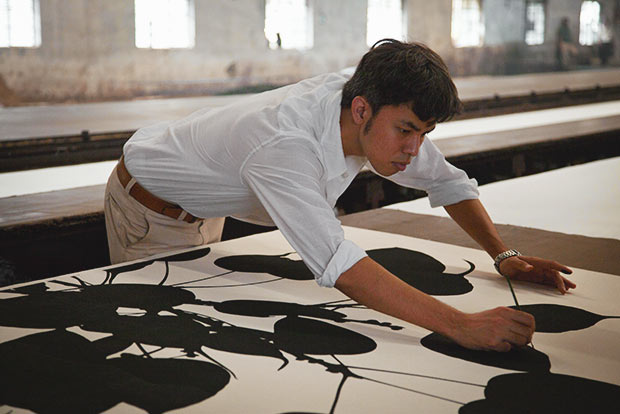Begin typing your search...
The life and times of Indian craftsmen
Designer Aratrik Devvarman speaks about his film, Notes from a Craftsman, which explores the work and life of five craftsmen who have worked with his brand Tilla for several years.

Chennai
Aratrik, who is originally from Tripura and grew up in Chennai and Kolkata, associated clothes with a particular time and feeling. “For me, summer holidays meant shorts and sandals; bedtime was soft old T shirts and crisp, starched sheets.
A day out meant watching my mother change into Kanjeevarams or Muga silks. For playtime, it was whites,” he begins. All these codes helped him develop an opinion on fashion, on what was elegant and what was not. However, he wasn’t quite sure if he wanted to become a designer.
“But I had a vague idea that I’d do something creative. I did my UG in Textile Design at the National Institute of Design (NID), Ahmedabad. This marked the beginning of my fashion career. I started to develop both the skills and the conceptual framework necessary to work in this industry. Apart from merely restricting myself to fashion, I chose to study textiles and Ahmedabad which has a rich history as a textile manufacturing city. The place offered plenty to engage with – block printers, tie-dyers, the Calico Museum, mills, architecture and markets,” says Aratrik who came up with his own brand Tilla in June 2011.
Tilla also happens to be the name of his house in Tripura. Handwoven materials such as khadi, jamdani and Kanjeevaram dominate his fashion voice. As a young designer learning his craft, Aratrik, who is
the brother of former tennis player Somdev Devvarman, worked with weaver clusters in Kutch, Andhra Pradesh, Tamil Nadu, Rajasthan, West Bengal, North East and Madhya Pradesh. It is these learnings and observations through the process that have culminated into a film Notes from a Craftsman.
Shot over two years in the homes of and workshops attended by artisans, Notes from a Craftsman, to be screened at Amethyst on January 19, captures their unique world-views which when patched together give us an understanding as to why it is important to do things by hand. “At a time when we are increasingly moving towards technology, the handmade craft needs to be preserved. The fact that these artisans have stuck to their roots is also what makes them special. Every design and pattern thereby has a unique story to tell.
Based in Ahmedabad, the film is also a record of a changing landscape of crafts that are fighting to stay relevant. It portrays a fragile ecosystem that gives meaning to many lives and takes the viewer’s attention behind the scenes into the realities, aspirations and challenges that craftsmen face today,” says Aratrik, who also launched a line of home furnishings which make use of prints of seven trees, each chosen by him for its distinct attribute, among other interior designing projects.
“Through dialogue, the film reveals how it is the philosophy they find in their work that keeps them strong and gives their lives meaning. Perhaps the most important and poignant point one takes away from this film is a reminder of how we are all connected as makers, designers or patrons of these crafts, through a value system that places pride in craftsmanship and doing things well above all else,” adds Aratrik who is also a habitual photographer and a nature lover.
The duration of the film is 25 minutes, and this event is the first time it is being screened for a public audience.
Visit news.dtnext.in to explore our interactive epaper!
Download the DT Next app for more exciting features!
Click here for iOS
Click here for Android
Next Story



